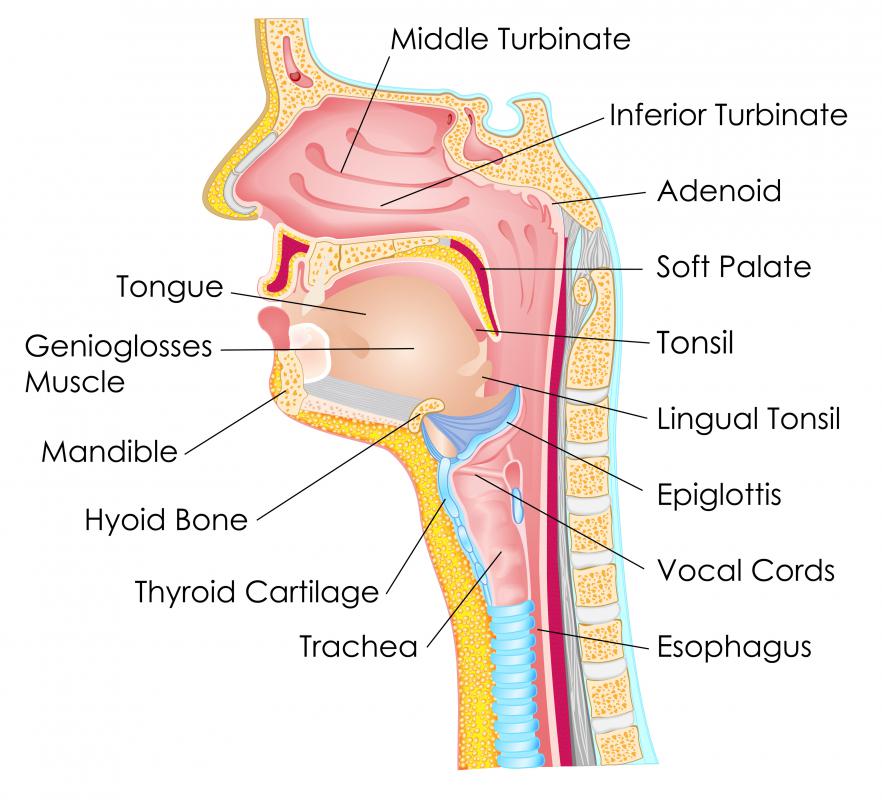At WiseGEEK, we're committed to delivering accurate, trustworthy information. Our expert-authored content is rigorously fact-checked and sourced from credible authorities. Discover how we uphold the highest standards in providing you with reliable knowledge.
What is the Anatomy of the Nose?
The anatomy of the nose is constructed to not only bring air into the body in an efficient manner, but also to help protect the body from any foreign particles inhaled. The portion of the nose that is visible is largely made up of cartilage, and is the front of a fairly large, open area that sits at the front of the skull. Blood supply to the nose comes from the same arteries that supply the rest of the face, and the structure of the nose has numerous branches that run throughout the surface.
Cartilage makes up much of the support structure for the outer anatomy of the nose, also called the external meatus. This cartilage is the same substance that found between joints throughout the body, and can best be felt in the tip of the nose. The pieces there are called the lower lateral and upper lateral cartilage, and are what give the nose its structure and shape. Above the cartilage is the nasal bone, which is just below the bridge of the nose. The interior of the nose is lined with mucous membranes responsible for catching any foreign particles that may be inhaled.

A layer of skin that covers the outer portion of the anatomy of the nose is thicker at the top and gradually becomes thinner toward the tip. Beneath the skin is a thin layer of muscle. At the base of the nose are the depressor muscles, while on the top of the nose and at the tip are the compressor muscles. There are also muscles running up the length of the nose to join the muscles of the face.

As the air is inhaled, it passes into a portion of the anatomy of the nose known as the nasal cavity. This cavity is a large open space lined with more sticky membranes designed to trap foreign particles. The walls of the nasal cavity contain shelves called turbinates, which act to increase the amount of surface area of the mucous membrane, leading to a higher chance of catching particles before they pass further into the respiratory system. Tiny hairs that line the interior of the nose also serve as a defense against invading particles.

The anatomy of the nose also includes the sinuses, which are four different cavities located in and around the nose. Two of these, the cavity at the top of the nose and the cavity to the sides, are fully formed and functioning when a human is born. The forehead cavity does not appear until the individual is around seven years old. Last to develop is the sphenoid cavity, which sits directly behind the nose and does not appear until puberty. These cavities also help filter the air before it goes into the lungs.
AS FEATURED ON:
AS FEATURED ON:















Discuss this Article
Post your comments